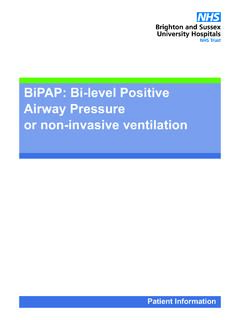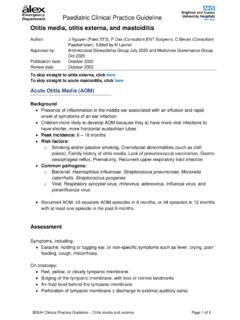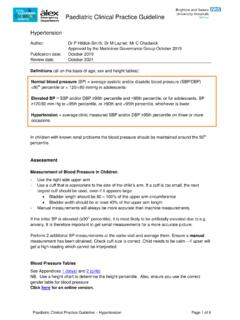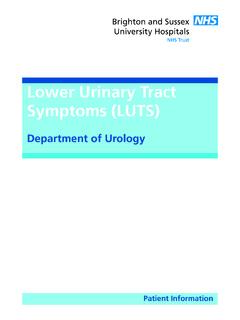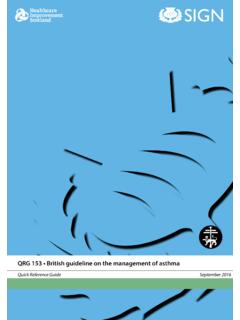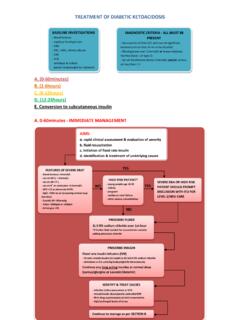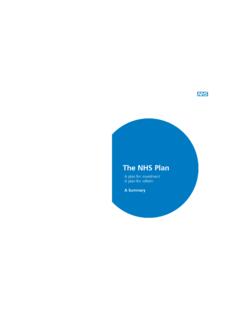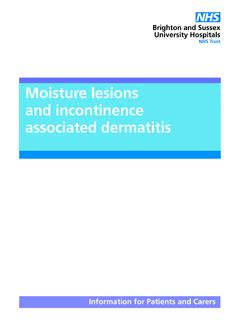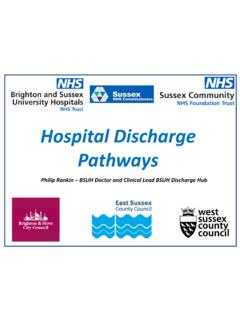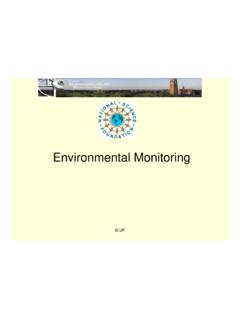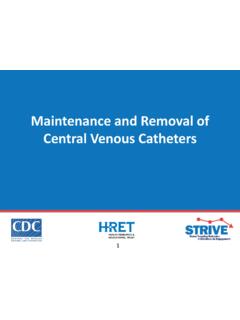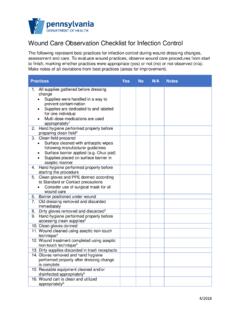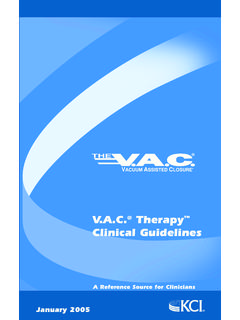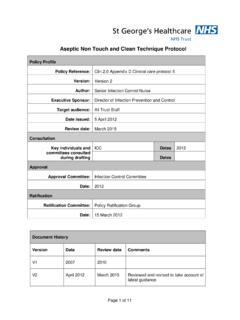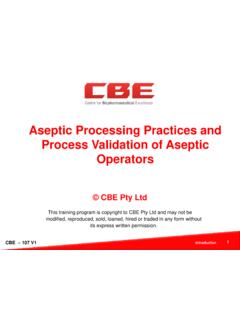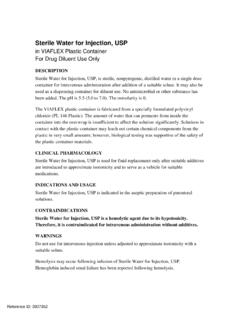Transcription of ASEPTIC NON TOUCH TECHNIQUE (ANTT®) PROTOCOL
1 Standards Group/CM/CB Reviewed July 2020 1 ASEPTIC NON TOUCH TECHNIQUE (ANTT ) PROTOCOL To be used for all IV and arterial fluids and drugs Rationale Infection prevention is essential to ensure that health service users receive safe and effective care, the Department of Health (2015) state that effective infection prevention and control must be part of everyday practice and should be consistently applied by everyone. ASEPTIC Non TOUCH TECHNIQUE (ANTT ), as advocated by The Association of Safe ASEPTIC Practice, provides a standardised framework for carrying out ASEPTIC clinical procedures that has been shown to support the reduction of healthcare acquired infection. The fundamental principle of ANTT is the identification and effective ASEPTIC protection of Key-Parts and Key-Sites . It aims to prevent the contamination of wounds and other susceptible / sterile body sites, referred to as Key-Sites, by ensuring that only uncontaminated equipment, referred to as Key-Parts, or sterile fluids come into contact with susceptible / sterile body sites during clinical procedures.
2 For this reason it should be used for any invasive procedure that bypasses the body s natural defences, for example, venepuncture, cannulation, administration of intravenous medication, wound care, urinary catheterisation and manipulation, insertion and management of peripheral and central venous access devices. The step-by-step clinical guidelines are designed to enable healthcare workers to identify and protect Key-Parts and Key-Sites during clinical procedures, use a non- TOUCH TECHNIQUE , ensure effective hand hygiene is undertaken at the correct points in time during the procedure and personal protective equipment is used correctly at the appropriate times. Brighton and Sussex University Hospitals ASEPTIC Non TOUCH TECHNIQUE (version 2) Practice Remember the 4 key principles of ANTT perform hand hygiene effectively contaminate key parts non key parts with confidence appropriate infective precautions Standards Group/CM/CB Reviewed July 2020 2 The flow chart above is extracted from the Trust ANTT policy and the choices for IV fluid administration are highlighted in yellow.
3 All central venous line intravenous drugs and fluids are to be prepared using standard ANTT using a sterile dressing pack placed on a cleaned trolley and sterile gloves. The decision to wear sterile gloves has been made to avoid any risk to the vulnerable patient group in case of any inadvertent touching of key sites You will need a second person to assist from start to finish. Standard ANTT without sterile dressing pack or gloves can be used to prepare drugs and fluids for a peripheral or arterial line. Also see Trust Policy C017 IV therapy administration to infants on the Neonatal Unit available on the Intranet and TMBU website for further information Process for central line fluids and medication: Collect equipment, drugs dressing pack and trolley Work out any calculations before washing hands. Remember to use a filter needle when drawing up drugs To maintain asepsis of Key-Parts and Key-Sites, does the main ASEPTIC field require Critical Management?
4 N Y -Use a general ASEPTIC field / micro critical ASEPTIC fields - A non- TOUCH TECHNIQUE is essential -Clean hands using soap and water -Use a critical ASEPTIC field (sterilised drapes) -A non- TOUCH TECHNIQUE is desirable -Clean hands using surgical hand scrub, Hibiscrub Can I perform this procedure without touching Key-Parts and Key-Sites directly? Wear non-sterile gloves Wear sterile gloves Wear sterile gloves Standard ANTT Surgical ANTT N N Y Standards Group/CM/CB Reviewed July 2020 3 from a glass ampoule. These are one way needles, so you need to change to an ordinary needle, if transferring via a needle to another solution. Ensure you have a rubbish bag attached to the trolley to keep your working area tidy and to reduce the risk of contamination of key parts Clean your trolley with Clinell wipes Wash hands as per handwashing guidelines.
5 Open your dressing pack and put on the sterile gloves and apron in the pack and prepare the sterile fieldUse the second person to open the packets, take the contents from them and place on the sterile area, do not drop onto trolley. Using the principles of ASEPTIC non TOUCH TECHNIQUE avoid touching the keyparts, prepare your syringes etc. Although the potential for harmful contamination of key parts and sites by air is low in comparison to contamination by direct contact (Eickhoff 1994), the decision has been made on this unit, to protect the end of all syringes with a bung or administration set to prevent accidental contamination of the key parts. This will help to promote conistency of care delivery. Remember that on new vials of antibiotics, they are only covered with a dust cover, so should be wiped with a steret and left to dry for 30 seconds before use.
6 When ready the 2nd person should open the ampoules and hold them to allow the sterile person to draw up the contents without handling the vial. Remember that TPN is not sterile so the second person should handle the bag whilst you insert the giving set and run the fluids through, do not put the TPN bag into the sterile area Once you have prepared the fluids, go to the baby, the second person should move the trolley avoiding touching the sterile area. Vials or ampoules that have been used, should be taken to the baby whilst the drug is being administered. This is in case of a reaction by the baby from that drug. Utilise gauze if you are handling any non-sterile parts of the line or administration set that is connected to the baby to disconnect current fluids The second person should hand you a 2% Chlorhexidine and 70% alcohol wipe to clean any exposed ports.
7 Remember to wait 30 seconds after you have cleaned before connecting new fluids. A new 2% Chlorhexidine and 70% alcohol wipe should be used for each port accessed. Standards Group/CM/CB Reviewed July 2020 4 REMEMBER BE WELL PREPARED BEFORE STARTING AND TAKE YOUR TIME, TO AVOID ACCIDENTALLY TOUCHING ANY KEY PARTS. References The Association of Safe ASEPTIC Practice (2015) ASEPTIC non TOUCH TECHNIQUE . The ANTT clinical practice framework Essential theory applied to practice. London: The- ASAP. Brighton and Sussex University Hosptials Aspetic Non TOUCH TECHNIQUE (version 2) Department of Health (2015) The Health and Social Care Act 2008. Code of Practice on the prevention and control of infections and related guidance Eickoff 1994. Airbourne nosocomial infection. A Contemporary Perspective Infection Control and Hospital Epidemiology 15 (10):663-672.
8
